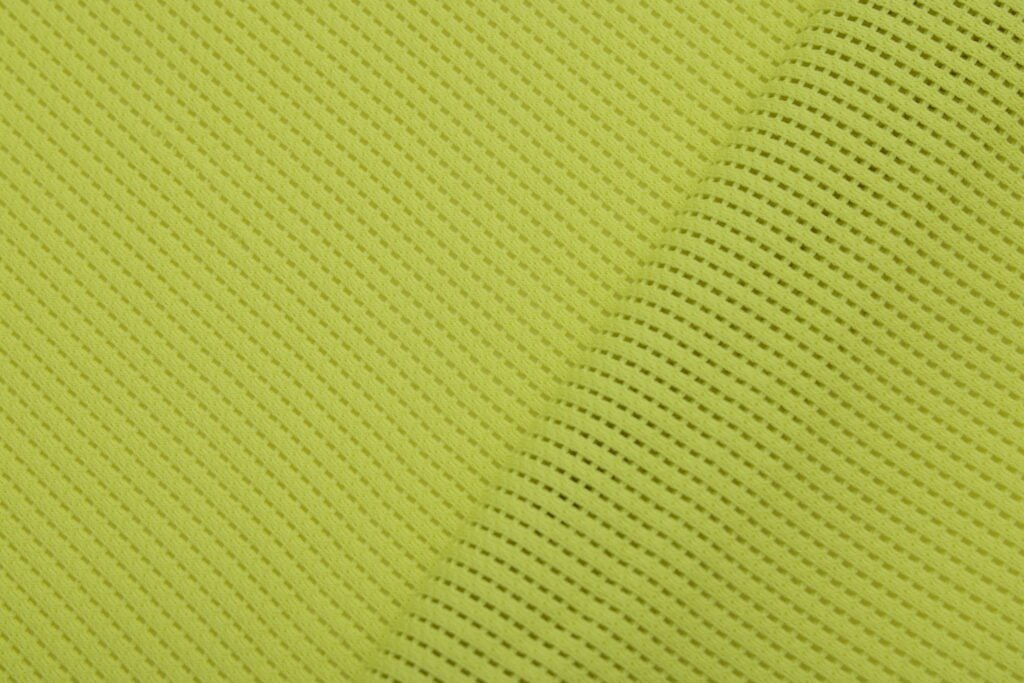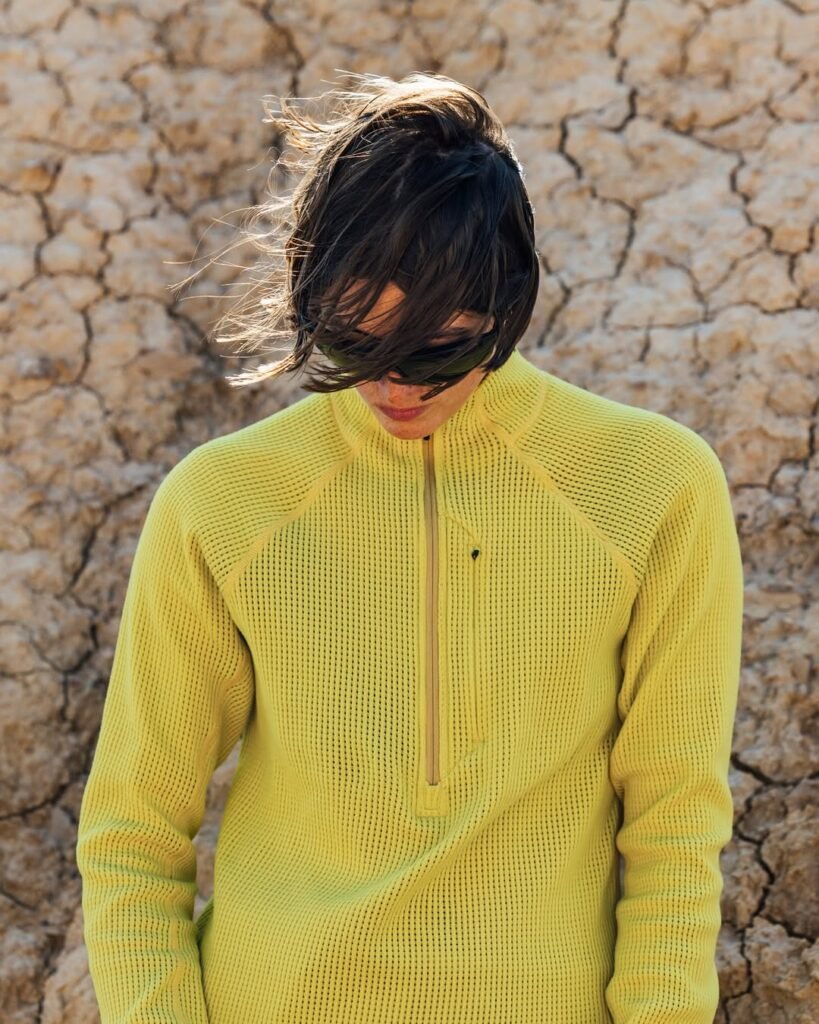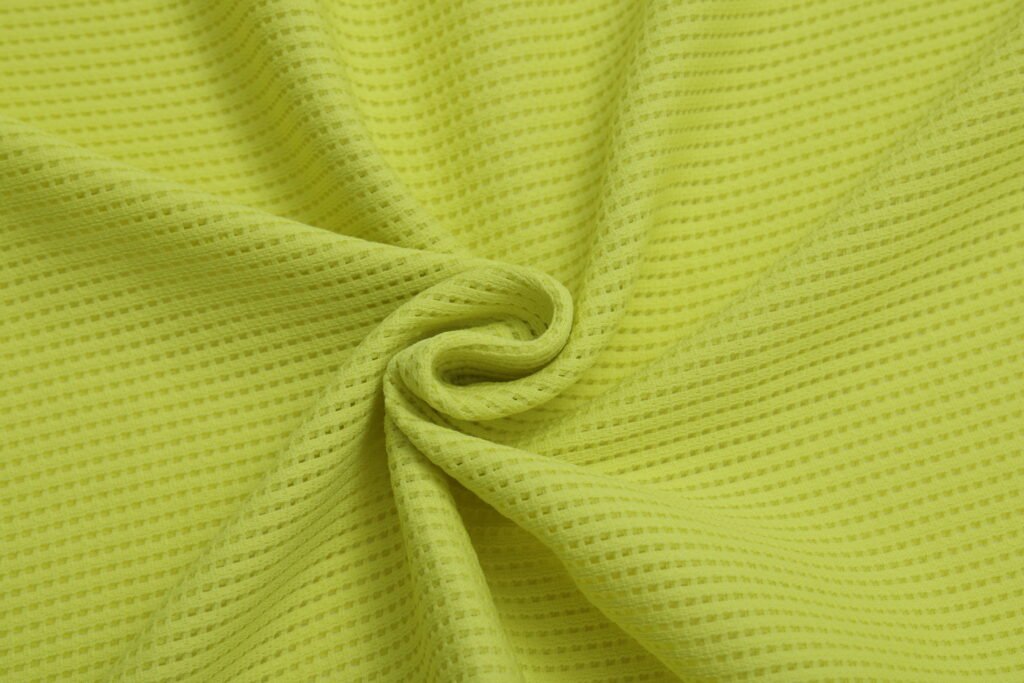
Q1. What is “houdini fabric” in plain words?
In everyday sourcing, many people refer to the innovative mesh used on certain mid-layers from the Swedish brand Houdini as houdini fabric. Visually it shows a tidy grid or honeycomb. Functionally it combines air-pocket insulation with open-mesh breathability:
3D pockets hold baseline warmth.
Open structure releases heat and moisture quickly.
The fabric is light, packs small, and dries fast.
This makes it a natural fit for half-zip pullovers and hooded mid-layers across trail running, hiking, cycling commutes, travel, and daily wear.
Q2. Who is it for, and which regions respond best?
Brand types: lightweight outdoor, urban utility, athleisure, travel, run/bike, and kids’ mid-layers.
Regions with strong pull: Europe, North America, Japan/Korea, and coastal Chinese cities, where “light-warm, not stuffy” layering has wide acceptance and low education cost.

Q3. What problems do apparel teams usually face with mid-layers?
Classic fleece traps sweat during activity and feels cold at rest.
Slow drying complicates travel and daily care.
Bulky hand feel leads to boxy silhouettes.
Sustainability goals are hard to meet consistently.
Small-lot sampling, color stability, and uncertain lead times add risk.
Q4. How does houdini fabric address those pains?
Warm without stuffiness: air pockets insulate while mesh vents excess heat.
Quick-dry and easy care: synthetic/blend constructions dry fast after wash or rain.
Light yet supportive: the 3D grid prevents a collapsed or clingy look.
Sustainability options: recycled polyester, dope-dyed color, and PFC-free finishes align with ESG goals.
Versatile placement: can sit next-to-skin or act as a mid-layer, simplifying SKU planning.
Q5. How to choose specs (mesh, GSM, finishes) for the right feel?
Focus on five dials:
Weight/GSM: 180–260 gsm is typical for mid-layers; 150–180 gsm works next-to-skin.
Fiber: rPET or standard PET; wool-blend options add natural warmth and odor management.
Mesh geometry: square grid, honeycomb, or mini-diamond—larger openings boost airflow but reduce warmth slightly.
Finishes: moisture management, anti-pilling, antibacterial/odor control, and PFC-free DWR (C0).
Coloring: dope-dye (lower water use) or conventional dyeing; lock lab dips early for stable bulk.
Pro tip: when launching Half-Zip and Hooded SKUs together, use the same fabric family in two weights to streamline patterns, trims, and replenishment.
Q6. What does a “good” supply route look like for this fabric?
Decision makers tend to prioritize stability, clarity, and sustainability:
Mature 3D-mesh equipment → high yields and controlled shade variance.
Application engineers who translate “on-body feel” into spec sheets.
Verified recycled content, dope-dye, and PFC-free finishing for clean compliance reporting.
The result: houdini fabric programs are easier to scale, reorder, and narrate at retail.
Q7. What are typical MOQ, sampling, and lead times?
Sampling: common color-card swatches in 3–5 days; custom weight/mesh in 7–10 days.
MOQ: often 300–800 m/colour; recycled or dope-dyed lines may run higher.
Bulk lead time: 18–28 days under normal load; 4–6 weeks for complex finishes or peak seasons.
Testing: colorfastness, pilling, formaldehyde, azo, REACH, and RSL—aligned to target market.
Q8. Any real buyer outcomes that illustrate the difference?
A Nordic trail brand piloted a mid-layer in traditional fleece and received feedback like “hot on climbs, cold on descents.” After changing to a houdini fabric-style 3D mesh:
Wearers reported drier comfort across changing effort levels.
Repurchases rose; black/charcoal and hi-vis yellow led sell-through.
Returns marked “too hot/not breathable” dropped.
They then split into Half-Zip and Hooded variants using one fabric family at two GSMs, simplifying inventory and expanding distribution from Scandinavia to DACH within a season.
Q9. Who usually handles the project on the supplier side?
To keep emails short and milestones clear, projects are typically run by:
Fabric Application Engineer – maps desired hand feel to weight, mesh geometry, and finishes.
Pattern & fit advisor – guides paneling, seam placement, and insulation strategy for mid-layers.
QC manager – testing matrix, inbound inspection, and TOP approval.
Regional account lead (EU/NA/APAC) – pricing, milestones, and customs/logistics guidance as a single point of contact.
Goal: deliver a “light-warm, breathable” mid-layer that is stable in bulk.
Q10. How to start quickly—and reduce risk?
Share the use case (run/hike/commute), target GSM, mesh openness, and budget band.
Receive 3–5 starter swatches (mesh size × GSM × finish) matched to that brief.
Select 1–2 for wear tests and fit work.
Lock color, place PO, schedule required tests, and move to bulk.
Trademark note: Houdini is a trademark owned by its rights holder. Here, “houdini fabric” is used as a commonly searched descriptive term for this style of mesh mid-layer fabric to help buyers understand features and sourcing steps.
Quick FAQ
Q: How does it compare with regular fleece?
A: It’s lighter, breathes better, and dries faster—reducing the “sauna-then-chill” swing during stop-start activity.
Q: Can it support sustainability targets?
A: Yes—recycled PET content, dope-dyed color, and PFC-free finishes are available for ESG reporting.
Q: Is it suitable for kidswear?
A: Yes, with the right tests (pilling, colorfastness, formaldehyde, azo, pH) and tuned hand feel/GSM.
Q: What price band should buyers expect?
A: Mid to mid-high depending on yarn, GSM, and finishes; stable volume improves cost.
CTA (customize before publishing)


